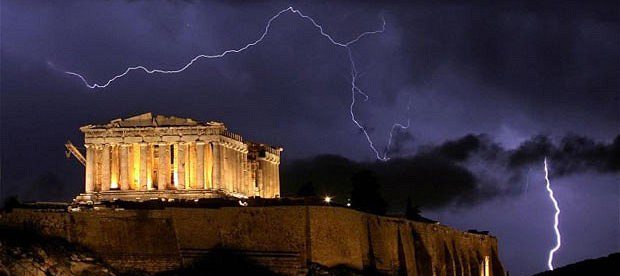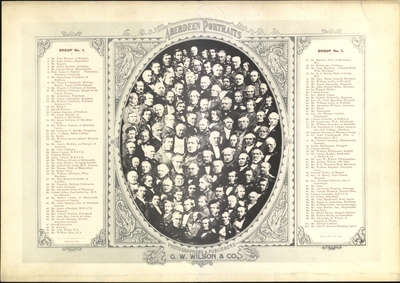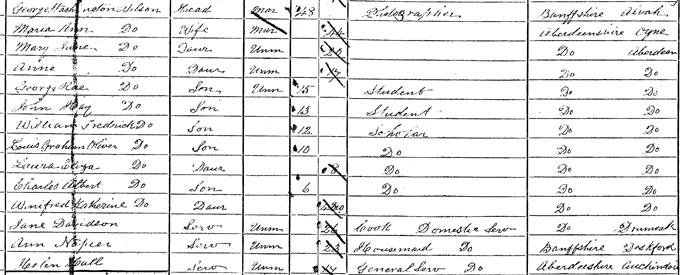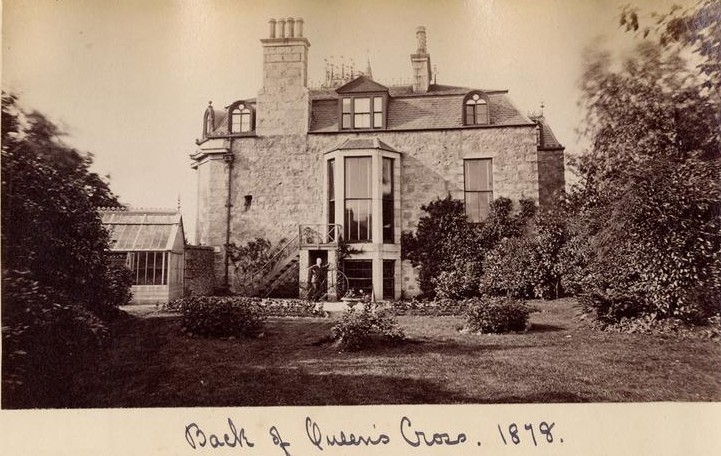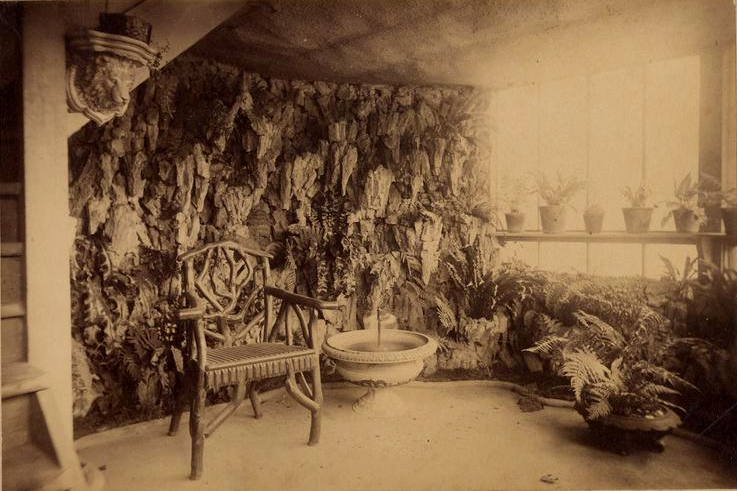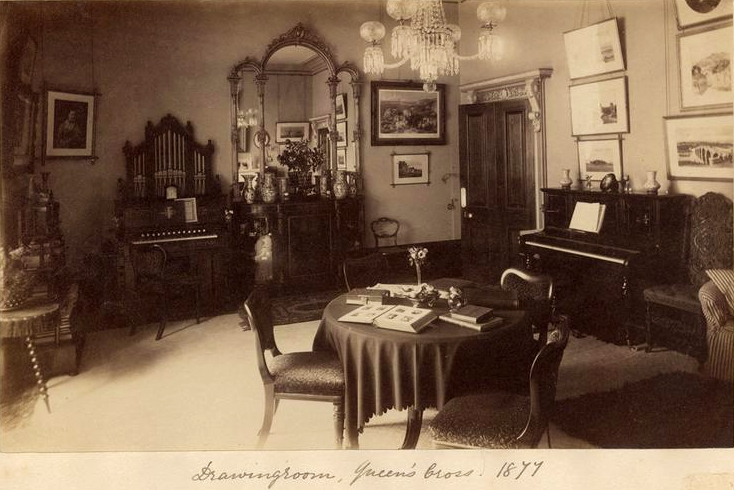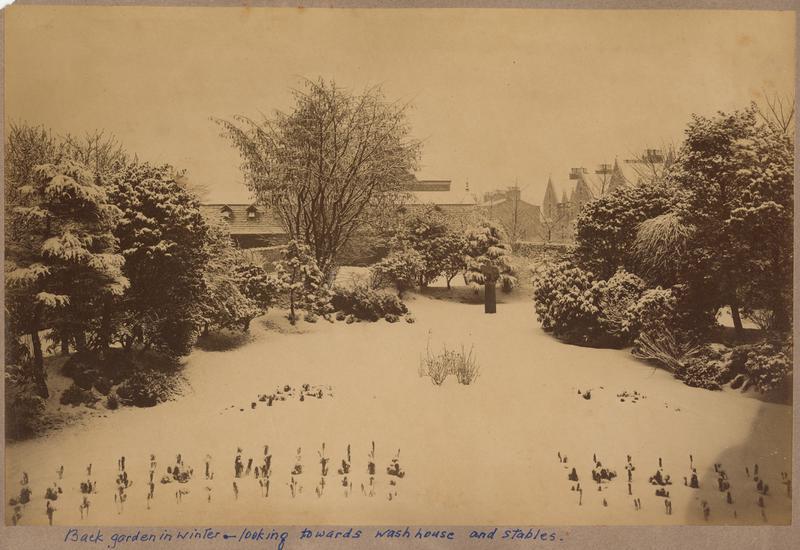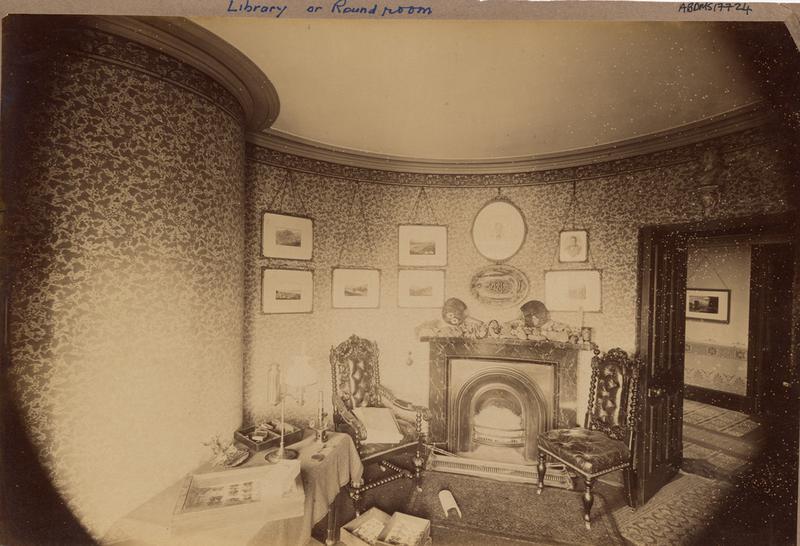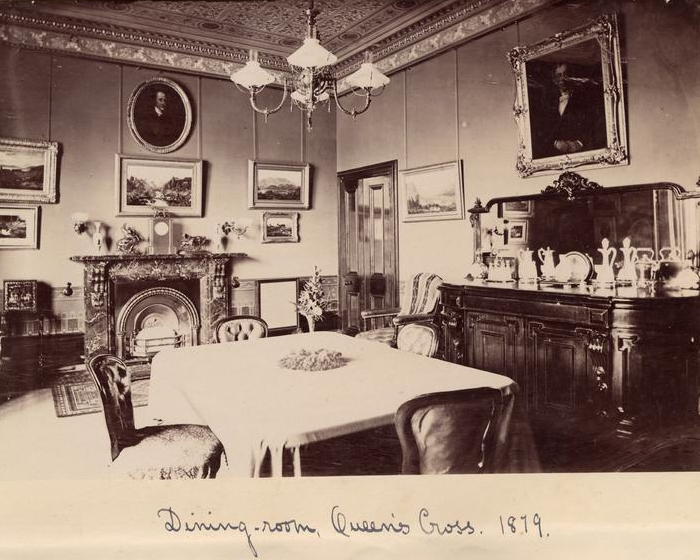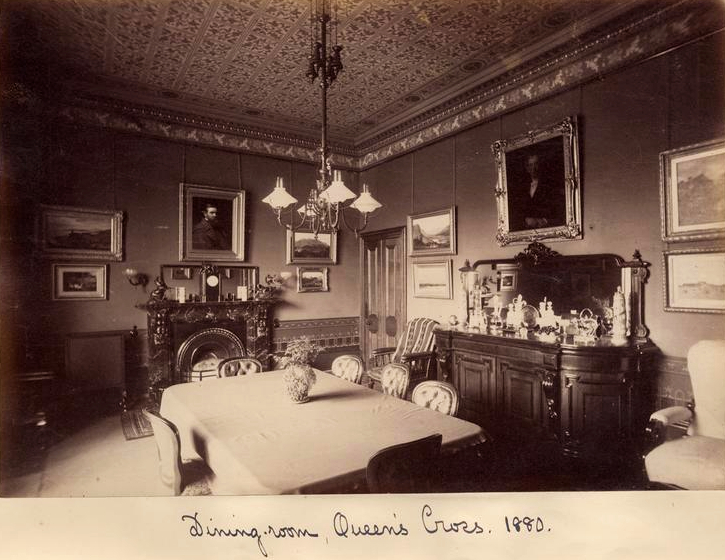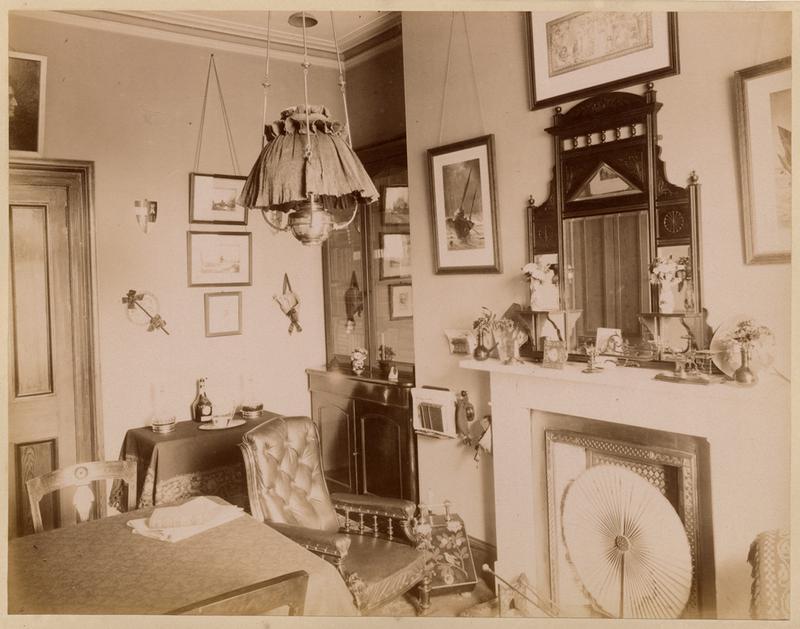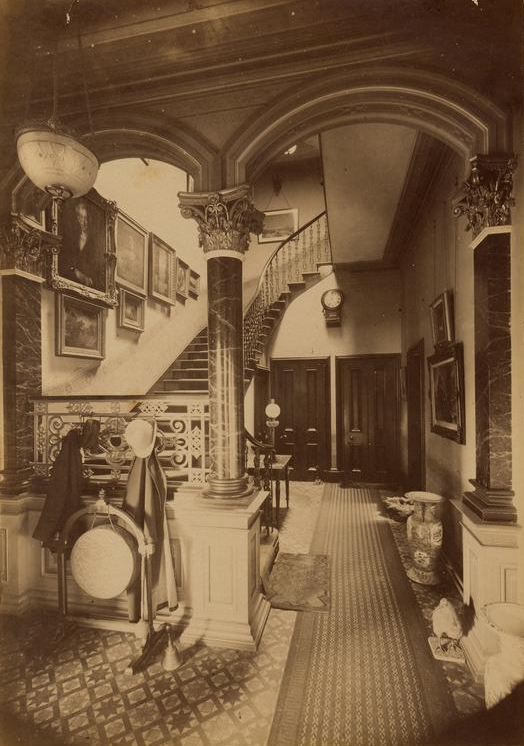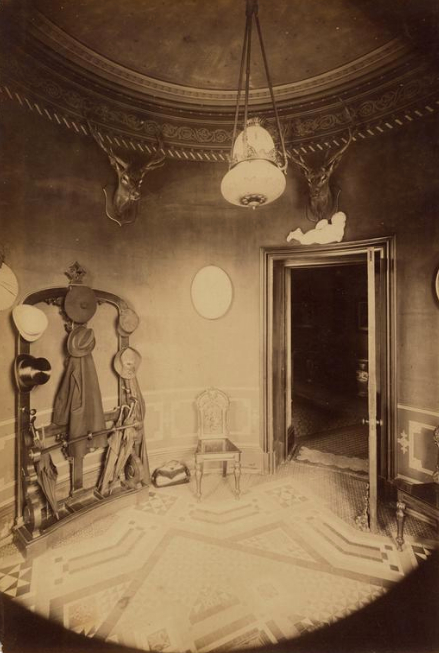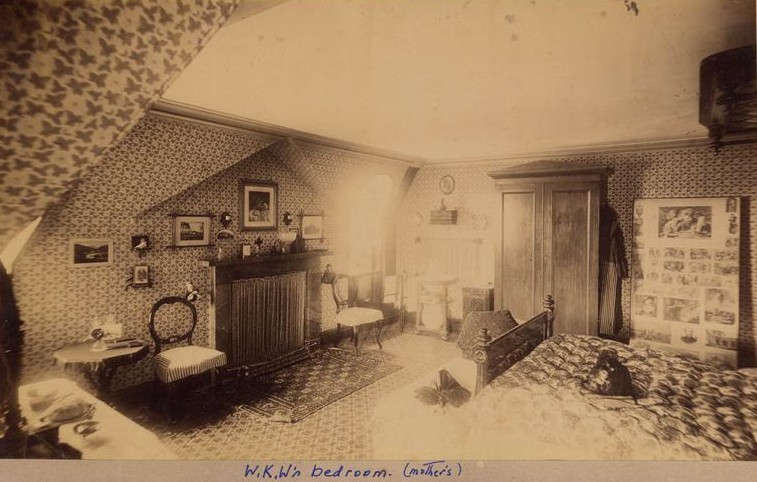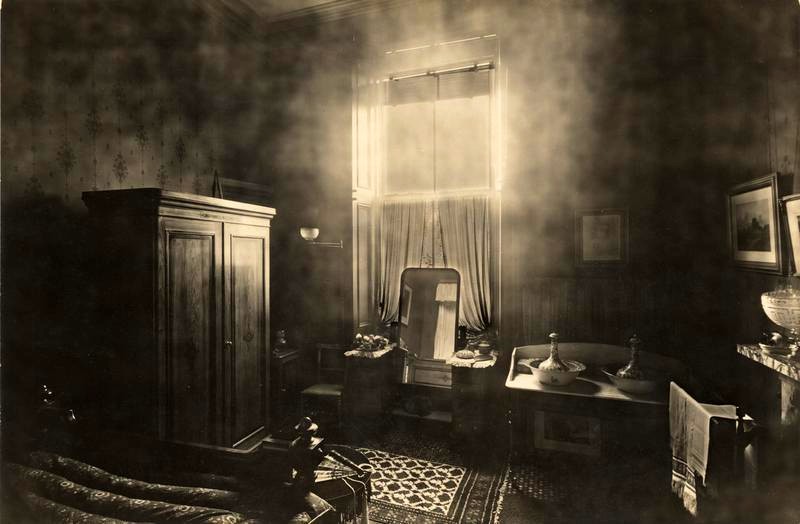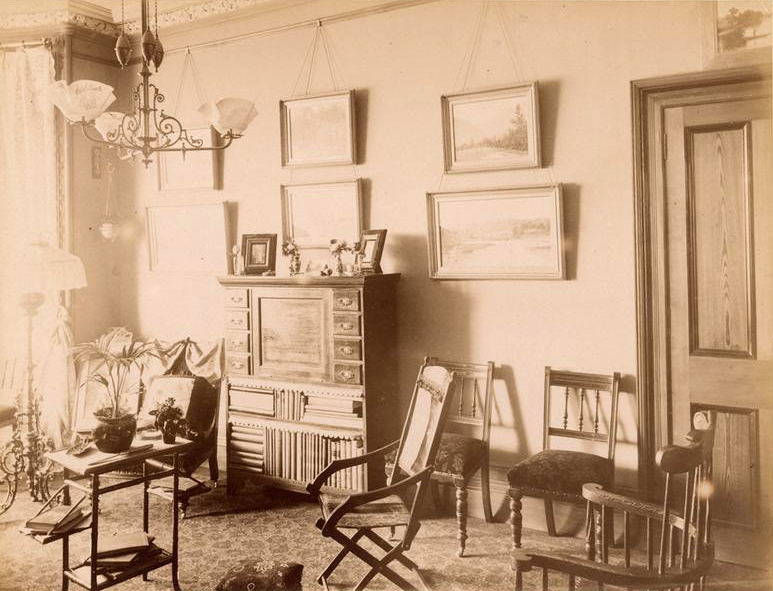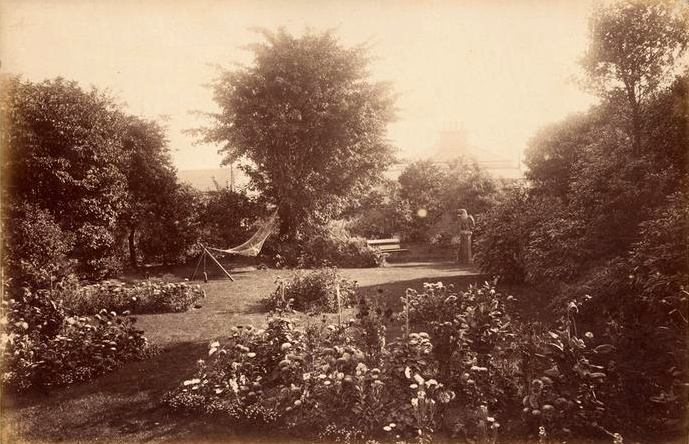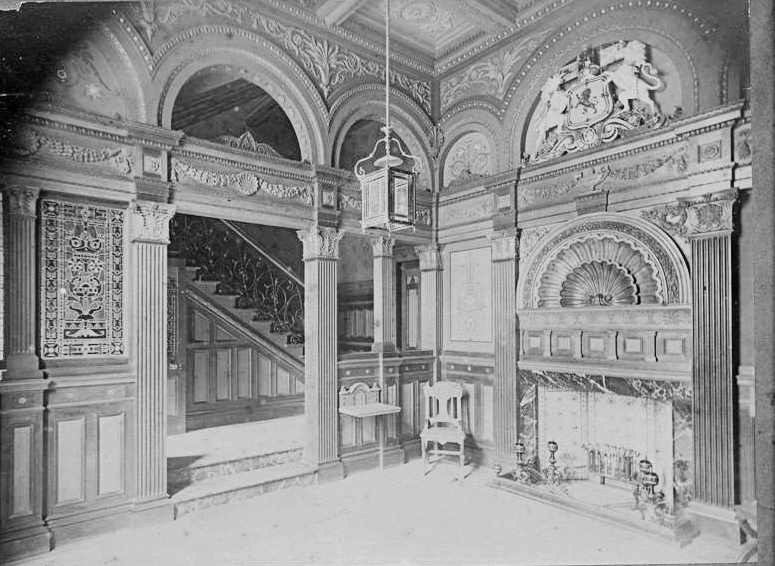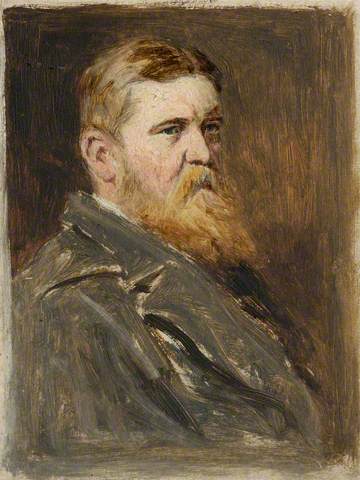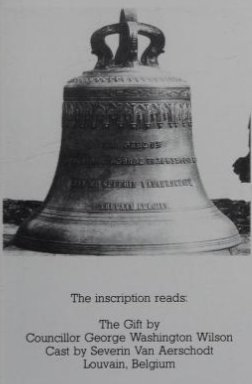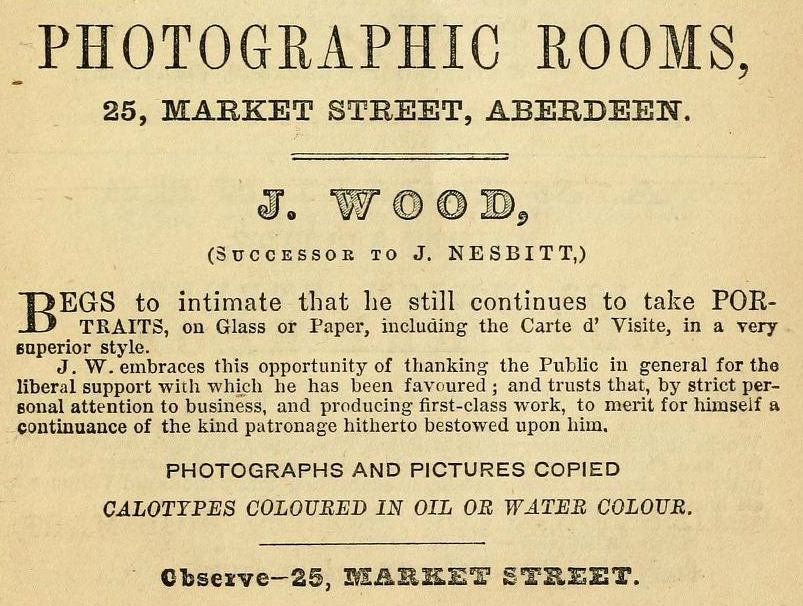George Washington Wilson ~
Joiner, Artist & Photographer
George Wilson (1823-1893) was to find Fame a few years later as George Washington Wilson when he became one of Scotland’s Premier Photographers.
Birth in 1823
George Washington Wilson was born on (or about) 7th February 1823, the son of George Wilson and Elspet Herd of Brownside at Waulkmill of Carnousie in Banffshire. The entry in the Old Parish Register (OPR) for Alvah in the County of Banffshire shows his Birth had not been registered ‘at the proper time’ and was inserted on the basis of a declaration made by John Webster, Schoolmaster at Forglen, before the late Sir Robert Abercromby, Justice of the Peace for Banffshire on 25th November 1851. This declaration was held by the London Indisputable Life Policy Company.
He left School at 12-yrs of age to be an Apprentice Carpenter. Appointed a Joiner in his Native Parish. Did a good deal of Portrait Painting. He practised his Artistic Skills by drawing Portraits of friends & neighbours and, after Training at Art Schools in Edinburgh & London, he returned to Aberdeen to become an Art Teacher & Portrait Painter. By the late 1840s Wilson was attracted by the work of Fox Talbot in the new Art of Photography and after initial experiments with a personal Homemade Camera, he Advertised a Business offering Photographic Portraits before eventually expanding into Landscape Photography.
Studied at the Academy Schools in Edinburgh.
Studied at the Royal Academy School in London.
Received Lessons from the Miniature Portrait Painter, Edward Henry Corbould.
1849 – Returned to Aberdeen, intending to take up Portrait Painting.
Constructed several remarkably good Camera Lenses, with which he carried out a series of very interesting experiments.
Wilson began his Professional Life as an Artist, having studied Art in both Edinburgh & Paris, but became fascinated by the new collotypes. After studying Art in Edinburgh & London, Wilson returned to his native City of Aberdeen in 1849 and Established a Business as a Portrait Miniaturist catering to the Wealthy Families of the North East.
He began to Build a Photographic Camera for the purpose of taking Photographic Portraits. Within just 7-yrs of constructing his own Equipment, his Mastery of the wet collodion technique was such that he was easily the best Photographer in the whole of Scotland. 140-yrs on his Plates Exhibit such Technical Proficiency that a modern Photographer would have to try hard to surpass Wilson’s best efforts. After some years of Mediocre success, Wilson ventured into Portrait Photography in 1852 setting a Portrait Studio with John Hay in 25-Crown Street in Aberdeen. From there, aided by his well-developed Technical & Commercial acumen & a Contract to Photograph.
In September 1850, G W Wilson Issued a ‘Bird’s-eye‘ View of Aberdeen, which, Lithographed by Keith & Gibb, was very cleverly sketched & being remarkably accurate, will continue to retain a high Local Value.

A Bird’s Eye View of History – J & J Hay’s Isometrical View of Aberdeen c.1850.
In September 1850 an Advertisement appeared in the Local Papers of Aberdeen for “Hays’ Isometrical View of Aberdeen, giving a Distinct & Correct View of the Whole City & Environs”. The Plan was available to Purchase for 3/6d and measured 34-ins by 19-ins. Carvers & Gilders, J & J Hays, had Premises at 2-Market Street where they also sold Prints & Optical Instruments. At the bottom left of the Image are the words George Wilson, Delt. (an abbreviation of Delineator, i.e. the 27-year-old Artist). G W Wilson created this Panoramic ‘Birds-E’e’ View of the City by making numerous sketches from the Roofs of High Buildings & then merging them into one large comprehensive Drawing, he captured the City actually as it was at this time – Open Fields are visible just to the North of the West end of Union Street. A key to the most Prominent Buildings was provided & it is interesting to see which Buildings have survived until today, often with additions & those which had yet to be Built. Robert Gordon’s Hospital (now College), Marischal College & various Churches including the Triple Kirks & St Nicholas (East & West) are all still standing but the West Prison & the Poorhouse have been Demolished. In December 1889, the Aberdeen Free Press offered its Readers an updated Version of the Bird’s Eye View as a supplement to their Newspaper. Numerous changes to the Landscape of the City had taken place since Wilson’s Artistic Record.
1852 – Entered into Partnership as a Miniature Portrait Painter with Mr Hay (Hay & Lyall)
Experimented with Stereoscopic Photography.
1855 – Was the 1st person to Photograph the Queen & Prince Consort at Old Balmoral & returned frequently to take more Photographs.
Commissioned by Emperor Frederick to paint a Series of Sketches of Deeside Scenery.
Commenced Business as a Photographer at 25-Crown Street, Aberdeen
Travelled to Braemar, the Trossachs, the Falls of Clyde & many of the wilder parts of Scotland.
Became a Director of the Opera House Company, Aberdeen Music Hall & of the Aberdeen Market Company.
Ceased, in recent years, to take a leading role in his Photographic Business, but returned to Painting, producing Oil Portraits of several of his old friends.
Miniature Painter & Photographer: George Washington Wilson Studied Art in Edinburgh & London before moving to Aberdeen in 1849 to pursue a career as a Portrait Miniaturist. From 1852 he took up Portrait Photography. Success led to Commissions from the Royal Family and the creation of a Photographic Record of the Construction of Balmoral Castle in 1854-55. In the 1860s his technical development of outdoor Photography led him to concentrate increasingly on Landscape, rather than Portraiture. He also developed Photographic Printing for the Mass Market & by the time he died in 1893 his Business was one of the largest Publishers of Photographic Prints in the World.
Marriage in 1849: George Washington Wilson married Maria Ann Cassie on 18th December 1849. The entry in the Old Parish Register for Banff (her Parish) is dated 15th December, gives his occupation as Painter (Artist) in Aberdeen, her name as Mary & shows that they were married in the Parish Church in Banff after Proclamation of Banns

A 2nd entry in the OPR for Aberdeen (his Parish) provides different details – his Occupation (Artist in Aberdeen), the Marriage date (18th December), Maria’s father (the late-William Cassie, Innkeeper in Banff) & the names of Witnesses Including John Hay Carver & Gilder in Aberdeen.


Wilson began his Professional Life as an Artist, having Studied Art in both Edinburgh & Paris, but became fascinated by the new collotypes. After Studying Art in Edinburgh & London, Wilson returned to his Native City of Aberdeen in 1849 & established a Business as a Portrait Miniaturist catering to the wealthy Families of the North East. He began to Build a Photographic Camera for the purpose of taking Photographic Portraits. Within just 7-yrs of Constructing his own Equipment, his mastery of the wet collodion technique was such that he was easily the best Photographer in the whole of Scotland. 170-yrs-on his Plates Exhibit such Technical Proficiency that a modern Photographer would have to try hard to surpass Wilson’s best efforts. After some years of mediocre success, Wilson ventured into Portrait Photography in 1852 Setting a Portrait Studio with John Hay in 25-Crown Street in Aberdeen.
From there, aided by his well-developed Technical & Commercial acumen & a Contract to Photograph Royal Family while Documenting the Building of Balmoral Castle in 1854-1855, he Established himself as one of Scotland’s Premier Photographers working for Queen Victoria & Prince Albert in 1860. Pioneering the development of Techniques for Photography outside of the Studio & the Mass Production of Photographic Prints, he moved increasingly from Portraiture to Landscape Photography in the 1860s. He also produced Stereoscopic Pictures whose main characteristic was that exposures were very short. By 1864 he claimed to have sold over 500,000 Prints. At the time of his death in 1893 (he had handed over the Business to his Sons, Charles, Louis & John Hay Wilson in 1888) the Firm employed 40-Staff & was one of the largest Publishers of Photographic Prints in the World, competing with James Valentine, who was also a prolific Photographer, with a large Company in Dundee. The Business survived until 1908 when it was wound up at Auction. Over 40,000 of Wilson’s Photographic Glass Plates still exist today, largely due to the meticulous washing & chemical treatments he insisted on.
1851 Census
In 1851 George W Wilson, 28, Portrait Painter, was enumerated with his Wife, Daughter & Brother at 13-Netherkirkgate in Aberdeen.
1853: Exhibited Photographs in Exhibition: He commenced Business by himself in Crown Street, and acquired celebrity by his Portraits, in which his only rival at the time was a Mr Roger of St Andrews. When he had collected some 100s of these, at the suggestion of Writer George Walker & with his assistance in the arrangement, 2-Groups of “Aberdeen Portraits” were issued, which, on their Publication, gave rise to not a little wonderment amongst the Citizens, as to when & where so many of their number could have been assembled & taken – as many believed – at one & the same time; & only when it was discovered that some of the number had been dead for many months, was it found out that the Portraits had been Grouped & not the Citizens. The then-Novel Idea was a great success & sold by the 1000s; was demanded by the Public far faster than with Mr Wilson’s conscientious carefulness in the Washing of the Prints – in order to secure their permanency as far as possible – they could be supplied. For, only a Photographer merely anxious to make money & careless of his Artistic fame in the future, could & would have supplied them as fast as wanted, but Wilson was so careful, that, after many years, copies of them still exist as brilliant as the day they were issued.
1854: Appointed by Prince Albert to take Photographs of the Royal Family at Balmoral, for which he was paid 3-Guineas per day.
1855: Began to produce Annual Photo-collages of many of the well-known Characters of Aberdeen. This brought in Business as more people competed to be included in the collages.
George Washington Wilson‘s work as a Portrait Photographer & especially the creation of Photo Montages selected from the large collection of images he had taken. Wilson had on file 100’s of negatives of the City’s Professional Elite & the surrounding area who were leading figures in Business, Industry, Law, Education & the Church. Wilson, encouraged by his friend George Walker of the Firm of A Brown & Co, Booksellers, created his 1st Grouping of Aberdeen Portraits in 1857, with a 2nd Collection in the following year. They spent many hours selecting & arranging the images to form an Oval of Faces where the perceived prominence of each Individual is determined by the size & placing of each Portrait within the Oval; then placing the largest & most important figures at the Centre; then he rephotographed the entire Collage as a Photomontage. Images of Walker, Wilson & Wilson’s brother Robert were included in the 1st Selection. The Venture was a huge success with 1,000s of Prints being Sold & eventually, a further 7-Groupings were created from the Stock of Images held. In 1907, a Booklet with an alphabetical list of all 897 Portraits was produced by G W Wilson & Co when a Portfolio of all 9–Groups with the List could be purchased for 10/6d – Half a Guinea.
- Alexander Brown, Booksellers, Bookbinders, Stationers, Circulating Library, Art Salon Aberdeen
Alexander Brown & William Paterson, Upperkirkgate 1785-89
Alexander Brown, Aberdeen 1789-90
Homer’s Head, Broad Street 1791
Alexander Brown & Co Aberdeen 1810-23
38 Broad Street 1824-25
71 Union Street 1831-37
79 Union Street 1841
The Public Library 77 Union Street 1842
Aberdeen 1843-1915
Bible Society repository. Apprentices: David Wyllie; Forbes Frost; James Brownie; Alexander Hill; D Hill transferred to Philip & Hill, August 1807. Firm absorbed into David Wyllie & Son in 1915.
He displayed this Assembly in the Window of Alexander Brown’s Bookshop at No.77 Union Street, the completed photomontage attracted immediate attention. Aberdeen Group-8 & Group-9 –
Remarkably, some Passersby did not realise that the Photograph was composed of Separate Portraits, and Wilson & Walker received Inquiries about “when & where all these people had been Gathered & Photographed.”
Wilsons own image appears in the Centre 3rd Portrait up from the bottom of the Oval (No.80) and in front of him is George Walker Bookseller (No.79). To the right is his brother Robert Wilson of Old Deer (No.81). Portrait Groups 2, 3 and (?) are below but alas the remaining 6–Portrait Photomontages together with their appropriate numerical identification listings have yet to be presented in their correct sequence.
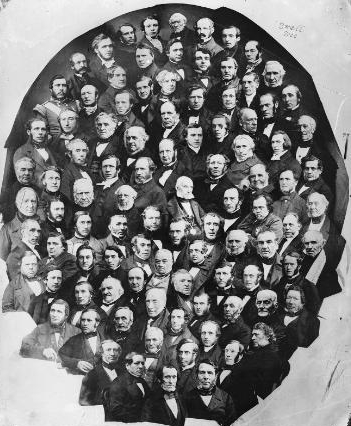

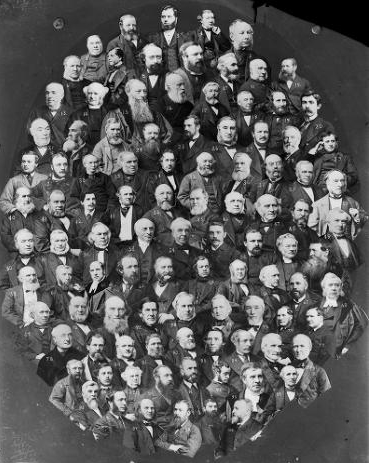
In 1861 George W Wilson, 39, Artist was enumerated with his Family at 25 Crown Street in the Parish Old Machar in the Royal Burgh of Aberdeen. The Household schedule continues on the following page of the enumeration book.


Wilson won a number of Prizes for his Photographic Works including winning Medals at the Great London International Exhibition of 1862 for his experimentation for quick Exposures.
Sir David Gill, who took the 1st Photograph of the Moon in 1868, was born in Aberdeen.
This Photograph was taken by George Washington Wilson & David Gill between 1868 & 1869. George Washington Wilson was best known for his Photographs of Buildings, Landscapes & People. He also did experimental photography. In 1868-69 he worked with Astronomer David Gill to take a number of Photographs of the Moon. This was done in Aberdeen.
Vanishing Aberdeen – In the steps of George Washington Wilson
Not satisfied in taking Studio Portraits (even though Queen Victoria had been one of his Photographic Subjects in 1855) Wilson constructed a Portable Darkroom & Toured not only Scotland but many Foreign Countries, always taking more Photographs to add to his Collection for later Publication as Postcards. It must have been a major exercise to take Outdoor Photographs in the mid to late-19thC since the wet collodion process required each Plate to be individually prepared, all in the dark, shortly before Exposure & during his Tours, Wilson would always have at least one Assistant in attendance.
1873: Appointed‘Photographer Royal’to Her Majesty Queen Victoria
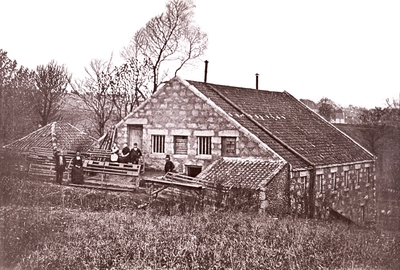
In 1875, the Photographer George Washington Wilson acquired a vacant Site at St Swithin Street, near Queens Cross, when he was forced to leave his Premises at the Old Distillery at Glenburnie which were required for re-Development. Glenburnie Distillery stood near to the Denburn, about 100-yds East of the Dam in Rubislaw Den, and was reached from Spademill Road. It was in operation until 1857 when the Buildings were taken over by Mr G W Wilson for Photographic Printing until 1875. They were later demolished to make way for the Construction of Forest Road. This photograph dates from the 1860s. By late 1876, this Building had been constructed & his stock of materials had been transferred.
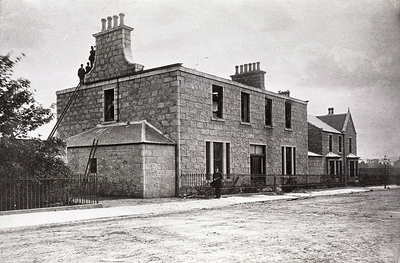
On the evening of 14th June 1882, a Fire broke out in the Offices & nearly all his Stock of Prints & much of his Machinery were lost. However, because his Negatives were Stored in part of the Building which was not destroyed, his Business could continue & rebuilding took place. Because of his Royal connections, he received a Telegram of Sympathy from Queen Victoria at Balmoral.
Below the Premises of in St Swithin Street between Albyn Lane & Stanley Street. The workers are exposing & drying the Glass plates.
1880: GWW was selling his views in his Tours of Scotland Albums. The Purchaser was allowed to choose which Photos should be included in their Album, from a selection of over 10,000 Photos in the GWW Collection.

Dwelling House at No.1 Queens Cross for the celebrated Photographer George Washington Wilson – 1865. Designed by Architect John Russell Mackenzie with significant Input from Wilson the House was a Symbol & Sign of the Wealth & Social Status of the Photographer. With plate-glass windows & a Central Heating System, the House was one of the most Modern in the City. This was only the 2nd House to appear on the Circle adjoining St Swithin Street. In 1871 George Washington Wilson, 48, Photographer, was enumerated at 1–Queen’s Cross in Old Machar with his Family & 3 Servants.

In 1881 George Washington Wilson, 57, Master Photographer (employing 15-men, 21-women, 2-boys & 2-girls) & Town Councillor was at the same address 1-Queens Cross with his Family & 2-Servants. His name has been transcribed (& indexed) as George G Wilson.
The Rear Facade is untouched in 1878 and shows a Family member with a Penny Farthing Bike & an adjacent Garden Green House. By 1881 the Rear has been altered with a 2-Storey Greenhouse with Fernery at Ground-Floor Level & a near full height 1st-Floor Conservatory accessible from the Drawing Room perhaps. The Garden Level Fernery with its Rustic Chairs & Roofing has a strange appearance of dried Plants or Herbs on the Wall or Racks & an ascending Staircase perhaps to the Conservatory. The Conservatory is well stocked & racked with Orchids, Tropicals & Ferns perhaps self-propagated & with climbing nets on the wall. The Drawing Room contains a Piano, Pedal Organ & a Victorian Fireplace, Chaise Longue, A fine Crystal Chandelier in addition to many Framed Photographs & a High-Bay Window overlooking the rear Garden. A spacious & well-lit Kitchen with extensive Work Surfaces, Victorian Fire Range & some 12-Bells to be summoned from the Upstairs Rooms & a Bay Window looking out over the Rear Garden with a distant Washhouse, Drying Area & Stables seen more directly in a Winter Scene. The Library or Round Room has its 2-Contoured Walls & has its own Victorian Fireplace. The Dining Room is again well Lit with a Marble Fireplace & Grand Mirrored Chiffonier Wine Cabinet & hanging Portraits & Landscapes with Wall & Ceiling Gas Lighting Brackets, Indoor Palms & finely decorated Ceilng & Friezes.
Bedroom with Brass-Bed, Chairs, Dressing Table, Marble Washstand with Jugs & Basins, Marble Fireplace with Fender, Drying Stand & Towel Rack and Mirrored Wardrobe, Gas Chandelier & Wall-bracket Lighting. The Ornate Archway Hall has Marble Corinthian Columns. Staircase hung with pictures & Chinese Gong & Handbell for announcing Dinner, Hallway contains Chinese Vases, Stuffed Bird & Coat-stand. The Outer Circular Hall has a Large Coat, Hat & Umbrella Stand & Stag Heads on the Upper Walls & a Decorative Inlaid Tiled Floor. A Top Floor or Attic Bedroom WKW’s (Mothers) is well-appointed with Canopied Bed, Wardrobe, Ottoman & Small Arched Windows, Fireplace. Wash-stand & Photograph Collage. A Spare Guest’s Bedroom images show a Canopied Bed reflected in a Dressing Table Mirror with an ornate Washstand, Wardrobe & Ornate Marble Fireplace. One brightly lit Room with a Folding Chair may have led out to the Garden via the external Staircase. A Breakfast Room, with Table & Chairs, Sideboard, Marble Fireplace with large mirror above has many Wall-hung Photos
In 1891 George W Wilson, 67, Retired Photographer, was again listed at 1–Queen’s Cross. The Census return for Old Machar shows that the Household included his son, Charles, a Photographer & 2-Servants.
Death in 1893: George Washington Wilson, 70, Retired Photographer, died on 9th March 1893 in his own home at Queens Cross. The entry in the Statutory Register of Deaths for the District of Old Machar in Aberdeen gives his late father’s Occupation as Lieutenant-Major in the Royal Artillery.


Testament of George Washington Wilson
In his Will – George Washington Wilson appointed his Wife, Maria Ann Cassie & 3 of his Sons, John, Louis & Charles, all Photographers in Aberdeen, to be his Trustees. The Inventory has a valuation of his Shop at 25-Crown Street in Aberdeen & a list of his Shareholdings includes the Aberdeen Swimming Bath Company, the Aberdeen Theatre & Opera House Company & the Aberdeen Music Hall Company. The total value of his Moveable Estate is given as £7258-16s-5d. He had 9-children – 5-boys & 4-girls. His daughters each received £500. A generous provision was made for his 3-Photographer Sons & his Wife. Bequests to his other 2-sons, described as being Abroad, suggest more cautious provision. His eldest son, George, was to Inherit his rightful share of the Moveable Estate (an equal share with his Siblings of 1/3rd of its value) with the following advice: ‘I recommend him to Authorise my Trustees to apply the same in the Purchase for him from a good Insurance or other like Company of an Annuity payable to him Quarterly or ½–Yearly during his Lifetime‘. His son, William, was to inherit an equal share with his Sisters of the Residual Estate after the death of their Mother.
Inset – GWW Grave at Nellfield Cemetary, Great Western Road.
George Washington Wilson & Co, captured images from all over Britain, recording everything from the natural grandeur of Fingal’s Cave on the Isle of Staffa to the bustle of London’s Oxford Street. Wilson had a Staff of Photographers including his son, Charles Wilson, who with Senior Staff Photographer Fred Hardie, Toured the Colonial Townships of South Africa. Dispatched to capture images of Australia in 1892, Hardie also travelled through Queensland, Brisbane, Sydney, Melbourne& Adelaide. These Tours provide a vivid picture of Gold Miners & early Settlers at work & play & of the Native or Aboriginal way of life. The Company invested in sourcing independent photographers to capture the Western Mediterranean, where they took Images of Gibraltar & the South of Spain, Morocco & Tangiers.
Throughout, Wilson demonstrated Technical & Commercial acumen &, by the early 1880s, the Company he Founded had become the largest & best-known Photographic & Printing firm in Scotland. Wilson handed the Business over to his sons, Charles, Louis & John Wilson in 1888. The Company, however, only survived for a short time under the Management of Wilson’s sons, with much of the Company being Sold in 1905 & the Company finally Ceasing Trading in 1908. The Company Stock was Auctioned off in 1908. The Plates passed into the possession of Fred Hardie, & then to the Photographer, Archibald J B Strachan, who in 1954, offered them to the University Library.
The Digitised Collection – Users of the system can simply type the name of the Town, City or Landmark they are looking for at George Washington Wilson Collection and can then ‘zoom in’ on the photographs to reveal Shop Names, the Writing on Posters, the Clothing worn by those captured in the Image & many other details without losing the quality of the Image.
A vast quantity of Wilson’s original Plates exists to this day. In 1958 at the age of 94, Charles Wilson, George’s son, bequeathed what was thought to be the entire Store of Negatives to Aberdeen Public Library, consisting mainly of examples from Wilson Foreign Tours, e.g. his Trip to South Africa. However, in the 1970s a major discovery of further Negatives was made in the Loft of an Aberdeen Home & were later donated to the University of Aberdeen. The Collection in the possession of the University was recently been transferred to CD-ROM & could be browsed using a dedicated PC within the former Queen Mother Library, Meston Walk, Old Aberdeen. A number of G W Wilson’s digitised images, ranging from Aberdeen to as far afield as Australia, could be viewed.
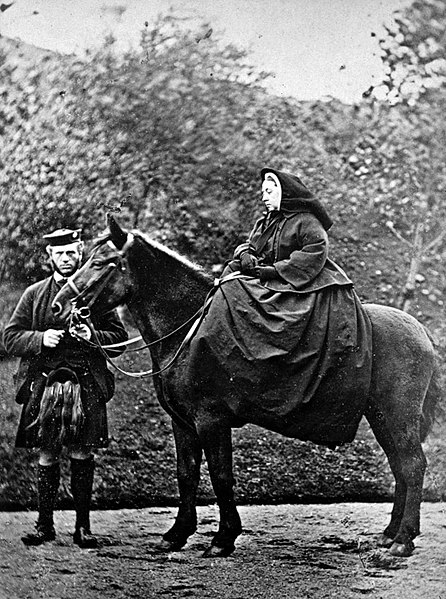
John Brown & Queen Victoria with ‘Fyvie‘.
But if the Royal Family were quick to recognise the genuine character of Wilson & his Artistic ability, to appreciate it & mark it with their Favour & Patronage, so were all their Dependants from John Brown downwards. Cannie Scotchman – pure & unadulterated as he was – he kept his ‘Weather E’e’ open & seeing how the wind blew, he made all things easy for his generous friend Wilson. Alone of all the Household, John could override all State Regulations & despise all Court Etiquette. On one occasion Mr Wilson called on him & was asked if he would like to see Her Majesty. “No, no,” said Wilson “I have just been smoking & I must be smelling like a Brock (Badger).” – “Hach, man!” said John, “I often have to see Her Majesty that way & she does not care a’e bit, she’s weel accustomed to that.” So the Interview took place; & Mr Wilson retired, not only with his head still intact upon his shoulders, but with the expression of Her Majesty’s high encomiums (praises) Bestowed upon him, with Orders’ to forward everything he did which he thought would interest her, especially any Views he might take of Glen Feshie, which she had recently visited. Aberdeen Awa: George Walker

Prominent 19thC Photographer George Washington Wilson had Stamps created to Celebrate & Advertise a New Partnership with his 3 Sons in 1887.
The Portrait in the centre of the Stamp is of Wilson & the initials of the 4-Partners can be seen in the Portrait corners. Roger Taylor in his 1981 Work on Wilson reports that the Postal Authorities took exception to the Stamps’ likeness to the real thing & Ordered them to be withdrawn.
Other Aberdeen Photographers
Alexander Ledingham Jr ran a Photographic Studio at 101a Rosemount Place from 1911 until well into the 1950s. He took over these Premises from John S Greenacre formerly of 5-Harcourt Road (Mid-Stocket Road) who Opened his Studio in June 1899. Prior to this Mr Greenacre had worked with G W Wilson & Co. His embossed Stamp on the lower right of an |Image indicates it was taken by Ledingham of Rosemount. The Pallete & Brush design of the embossed Stamp hints at Ledingham’s Artistic aspirations as a Photographer. Ledingham’s father, another Alexander, (d.1926) run a Newsagent & took a prominent part in Public Life. He ran his Shop from 27-Bank Street, Ferryhill for 10-yrs before moving in 1890 to Premises at 41-Victoria Road, Torry. He eventually retired from Business in 1904. He played a large role in the Incorporation of Torry into the City of Aberdeen and was involved in many Improvements to the area.
John Fraser Lessels styled himself “The Photo King” & is so credited on the back of his Postcard photographs. Lessels had a bold approach to promotion. An Advert in the Aberdeen Daily Journal from 1908 reads “Salvation for 6d, Cabinet Size. Get saved now. Lessels, Photo King, 64-St Nicholas Street.” Lessels was born in Aberdeen in 1878 & married a cousin called Faith Duncan in 1907. The Photo King had Studios throughout Aberdeen, his Main Office being at 15-Crown Street & a number of Premises in Edinburgh & Angus. Faith Duncan worked as a Photographer’s Assistant & Lessels’ also had a sister who was a Photographer but who sadly died aged 25. As a life-long Pacifist, he & his Family moved to Dublin to avoid Conscription in WW1 & worked with the Lafayette Photographic Studio. Lessels later moved to Bangor in Northern Ireland where he is understood to have had a difficult time & appears to have suffered a mental breakdown & incarceration. One of his sons, Maurice Lessels, ran a Photographic Studio in Lisburn, County Antrim for many years.
The Photographic Business: Ernest Donald (also known as Ernst Donald) is of particular importance in that he was one of the very early people to take Photographs in Aberdeen & it is likely that a Portrait taken by him is the earliest surviving example of a Portrait taken in that City. He may also have been the 1st Person to have a Permanent Studio in Aberdeen as a retrospective Article dated 1905 mentions that Ernest had a Studio in Rose Street which, incidentally, is just around the Corner from where he lived in Thistle Street. Unfortunately, he does not appear to have Advertised his Business in the usual Trade Directories. Ernest operated as a Daguerreotype Artist (photo process) from just before 1850 until about 1857 by which time he was recorded on his daughter’s Birth Certificate as a ‘Provision Curer’.
An Itinerant Photographer, Mr Blackwood, has been identified as visiting the Mechanics Institute in Market Street, Aberdeen as early as 1846 (see Book ‘A Faithful Likeness’ by Bernard & Pauline Heathcote) & at least 4-more Itinerant Photographers Advertised prior to 1850.
George William Morgan was born in 1855 in Clatt, a village in Northeastern Scotland. The son of a Blacksmith, he initially Apprenticed as a Druggist in Aberdeen before relocating to California, where he Studied Photography in San Francisco under local Photographer George Daniels Morse. Returning to Aberdeen in 1880, Morgan worked as an Assistant to photographer Alexander Dinnie at his 3-Bridge Place Studio.
After paying his Professional dues, Morgan opened the Elite Studios with his brother William at 5-Market Street in downtown Aberdeen. The Studio quickly established itself as a popular Portrait Gallery & later expanded its Operations into the West-end, 393 Union Street, doing Business there as Messrs Morgan & later operated smaller Studios in the suburbs of Aboyne & Ballater. George Morgan married & his family grew to include 12-children. When he was not taking Portraits or exhibiting his Works at the Royal Photographic Society, he generously donated his time to the Ferryhill Parish Church as a Violinist & Choir Director. He was also known for his Civic Activism & generous support of Aberdeen Businesses. The Aberdeen Daily Journal described Morgan as “a thorough Artist in every sense of the word.” He was always seeking to join his love of Science with his passion for Photography & often experimented with various types of light sources. In 1894, he made what are believed to be the 1st Night-time photographs utilizing Magnesium light. The sitter would not be exposed to any type of harmful rays as the Magnesium light would lightly travel over its subject & allow just enough light for the photographer to capture a nocturnal image. He patented several of his photographic instruments, including a set of rotating rollers designed to enhance scenic backgrounds. His Photographs also won several Industry prizes for portraiture & retouching.
In June of 1909, Morgan was travelling to London by Train on what was supposed to be a routine Business Trip with a Friend & Colleague. Awakened by some gusty winds, Morgan’s travelling Companion noticed he was missing. It is believed he had awakened in the middle of the night & accidentally fell from the Train for reasons that remain unclear. G W Morgan’s tragic death at the age of 54 stunned Family, Friends & members of the tight-knit Aberdeen Business Community. He was interred in Aberdeen’s Allenvale Cemetery & Morgan’s Photographic Business continued Operations for several years after his death.
